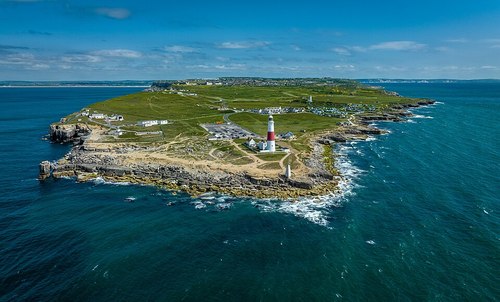Noiser
The Vikings: First Contact
Play Short History Of... The Vikings
There is no denying it - the Vikings were pioneers. They changed the course of history in France, England and the Baltic states. They established the cities of Dublin and Reykjavík. But was the Holy Island of Lindisfarne their first British landing, or had they been there before?
Lindisfarne
On June 8th, 793 AD, a monk was strolling along the beach of Lindisfarne, off the northeast coast of England. Behind him was the monastery; in front was the sea, shrouded in a thick fog. He strained his ears – over the guillemots' shrieks and the waves lapping on the sand, he could hear a rhythmic banging. He looked to the sky, but though the clouds were black, there was no thunder among them. The source of the thumping soon materialised - through the swirling fog, a monstrous sight appeared: a fearsome head, a serpent or a dragon with bared teeth. The monk, his heart pounding, couldn’t tear his eyes away and soon realised it was not a monster but the carved prow of a ship. A ship moving faster than any he’d seen before.
Two more emerged from the haze, each as swift and shocking as the first. Men piled into the shallows, wearing glinting helmets and leather tunics covered with animal skins. Their bearded faces were painted red, blue and black.
A faraway bell began ringing – the monks in the monastery knew they were under attack. But at high tide, the island was cut off from the mainland. The monk watched on helplessly as the robed figures of his brothers emerged from their sanctuary, only to be met by axes. The sounds of slaughter drifted to where the older man knelt, praying hard, on the beach. Opening his eyes, he saw the invaders returning to their boats, laden with plunder. They had everything from gold relics and jewels from the chapel, to the order’s precious food stores. Even the leather manuscripts he had spent years decorating with precious stones and rare paints were ransacked. They carried small boys over their shoulders and dumped them into their boats, once God’s anointed children, now slaves.
The Norsemen had come. Everything was about to change for the island of Lindisfarne, the seven kingdoms of England and the lands all around. Many will know about the famous Viking raid of Lindisfarne, but did you know it was not the first time the Vikings had come to Britain?
The Vikings’ First Anglo-Saxon Victim
Four years earlier, in 789AD, three strange ships were spotted off the Isle of Portland (now Dorset on England’s south coast). The visitors were assumed to be traders, and word was sent to an official named Beaduheard. He jumped on his horse and rode to the southernmost lookout.
But before he could welcome the strangers, in a sudden and shocking turn of events, he was struck dead by a volley of arrows from the boats. Beaduheard has the dubious—and fatal—honour of having the first contact between Anglo-Saxons and Vikings.
He may have been the first victim of the Norsemen, but he would certainly not be the last!

